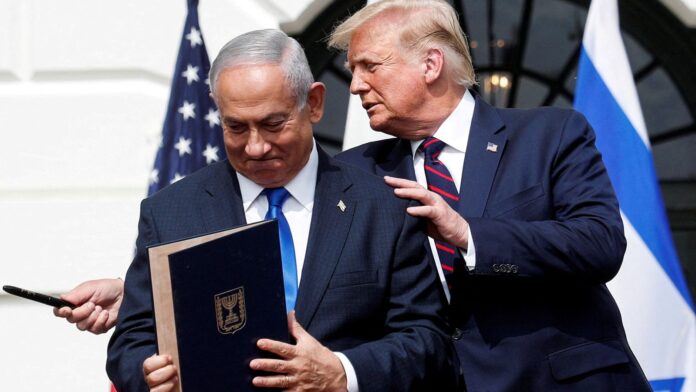President Trump declared on Tuesday that the United States should seize control of Gaza and permanently displace the entire Palestinian population of the devastated seaside enclave, one of the most brazen ideas that any American leader has advanced in years.
Hosting Prime Minister Benjamin Netanyahu of Israel at the White House, Mr. Trump said that all two million Palestinians from Gaza should be moved to countries like Egypt and Jordan because of the devastation wrought by Israel’s campaign against Hamas after the terrorist attack of Oct. 7, 2023.
“The U.S. will take over the Gaza Strip, and we will do a job with it too,” Mr. Trump said at a news conference Tuesday evening. “We’ll own it and be responsible” for disposing of unexploded munitions and rebuilding Gaza into a mecca for jobs and tourism. Sounding like the real estate developer he once was, Mr. Trump vowed to turn it into “the Riviera of the Middle East.”
While the president framed the matter as a humanitarian imperative and an economic development opportunity, he effectively reopened a geopolitical Pandora’s box with far-reaching implications for the Middle East. Control over Gaza has been one of the major flash points of the Arab-Israeli conflict for decades, and the idea of relocating its Palestinian residents recalls an era when great Western powers redrew the maps of the region and moved around populations without regard to local autonomy.
The notion of the United States taking over territory in the Middle East would be a dramatic reversal for Mr. Trump, who first ran for office in 2016 vowing to extract America from the region after the Iraq war and decried the nation-building of his predecessors. In unveiling the plan, Mr. Trump did not cite any legal authority giving him the right to take over the territory, nor did he address the fact that forcible removal of a population violates
international law and decades of American foreign policy consensus in both parties.
He made the proposal even as the United States was seeking to secure the Israel-Hamas cease-fire’s second phase, which is designed to free the remaining hostages in Gaza and bring a permanent end to the fighting. Negotiators had described their task as exceptionally difficult even before Mr. Trump announced his idea of ousting Palestinians from their homes.
Hamas, which has ruled in Gaza for most of the past two decades and is re-establishing control there now, immediately rejected mass relocation on Tuesday, and Egypt and Jordan have rejected the idea of taking in a large influx of Palestinians, given the fraught history, burden and destabilizing potential.
Sami Abu Zuhri, a senior Hamas official, said that Mr. Trump’s proposed relocation was “a recipe for creating chaos and tension in the region.”
“Our people in Gaza will not allow for these plans to come to pass,” he said in a statement distributed by Hamas. “What is needed is the end of the occupation and the aggression against our people, not expelling them from their land.”
Mr. Trump waved aside the opposition from Arab countries like Egypt and Jordan, suggesting that his powers of persuasion would convince them.
“They say they’re not going to accept,” Mr. Trump said during an earlier meeting with Mr. Netanyahu in the Oval Office. “I say they will.”
Mr. Netanyahu, sitting at Mr. Trump’s side, smiled with satisfaction as the president first outlined his ideas. Later, during the joint news conference, the Israeli prime minister heaped praise on Mr. Trump.
“You cut to the chase,” Mr. Netanyahu told Mr. Trump. “You see things others refuse to see. You say things others refuse to say, and after the jaws dropped, people scratch their heads and they say, ‘you know, he’s right.’”
“This is the kind of thinking that will reshape the Middle East and bring peace,” he added.
In his remarks, Mr. Trump insisted that Palestinians would quickly warm to his idea.
Source: The New York Times




